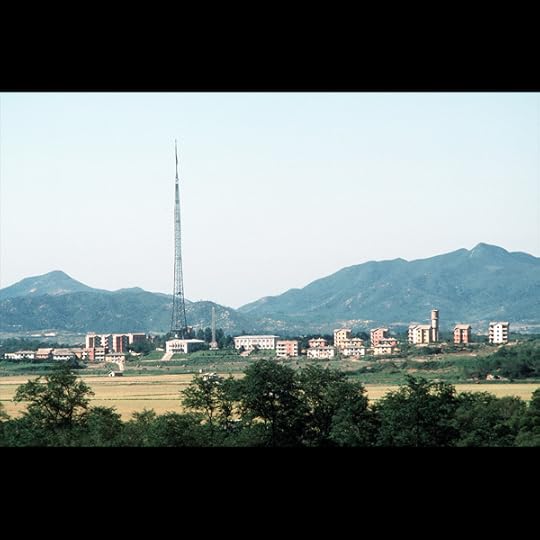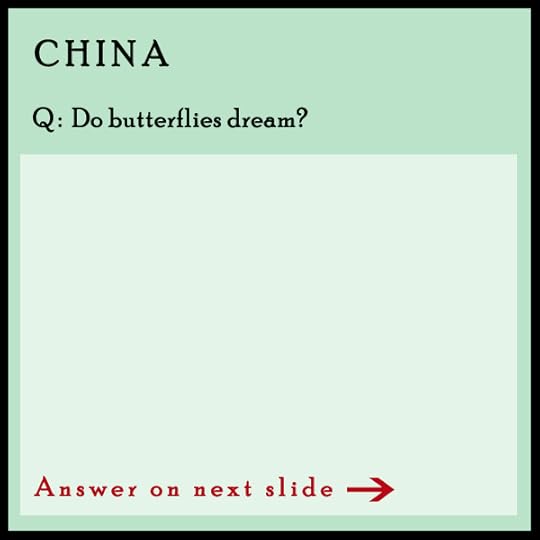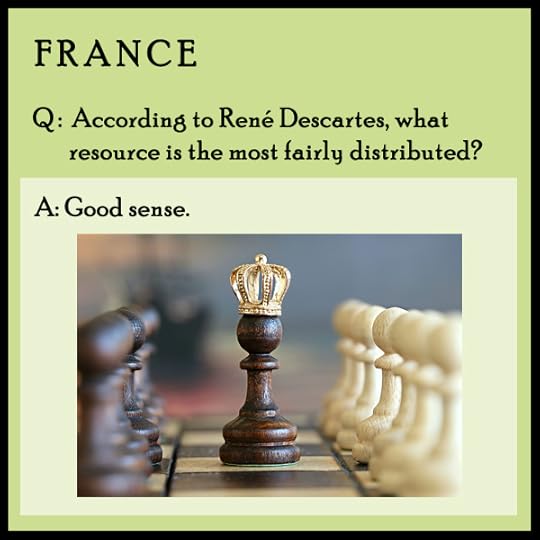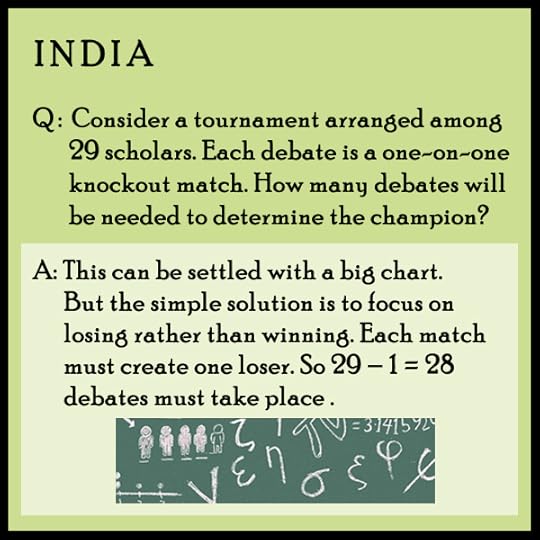Oxford University Press's Blog, page 299
November 19, 2017
How China and Russia are reshaping international politics
Growing wealth and power of non-Western actors have been fuelling the debate on the future of global politics for the last decade. The West’s internal difficulties, such as the Eurozone crisis, Brexit, and the wave of populism, have weakened its determination to defend the status quo, and increased the importance of regional-level international politics. China and Russia stand out as the most vocal critics of Western domination of global politics and are often bound together as a primary challenge to the West. Russia’s annexation of Crimea and China’s construction of artificial islands in the South China Sea came to symbolise the return of the great powers’ territorial appetites. Sino-Russian cooperation and joint positions on the pressing issues of the day such as the North Korean nuclear crisis or Internet governance have deepened the dividing lines in international politics.
Western commentators recurrently accuse Beijing and Moscow of the desire to secure domination in their neighbourhoods and establish exclusive ‘spheres of influence’, thus undermining the global liberal order. They interpret China’s flagship international project, the New Silk Road that aims to link China and Europe, as a way of buying political influence in developing states, from East and Central Asia, to the Balkans and Eastern Europe. Russia-led Eurasian Economic Union is often regarded as a means to fence off the post-Soviet space from the outside world. Chinese and Russian elites, in turn, promote their initiatives as the contribution to global governance and the proof for readiness to share the burden of economic and political responsibility.
The pursuit of regional cooperation by great powers remains puzzling. Powerful actors are not used to obeying international norms and rules, preferring instead to pick-and-choose what suit their interests at the moment. China and Russia enjoyed having advantage over smaller neighbours for centuries. Their ruling elites understand patron-client relations much better than multilateralism where the equality between big and small participants remains the number one rule. Moreover, the presence and engagement of great powers in regional matters often impede the development of international collaboration, as illustrated by the deadlock within the Shanghai Cooperation Organisation, co-sponsored by China and Russia. The two most successful examples of regional cooperation, the European Union and ASEAN, have flourished under the US umbrella but without direct American involvement.
China and Russia stand out as the most vocal critics of Western domination of global politics
However, seeing the New Silk Road and the Eurasian Economic Union as a façade hiding the mere pursuit of power does not help us comprehend how non-Western rising and resurgent powers would like to transform the landscape of international politics. Explaining their regional projects as the tools of statecraft, aimed at securing political and economic interests does not suffice, either. We need to ask how the creators of the New Silk Road and the Eurasian Union, i.e. the Chinese and Russian ruling elites, understand regionalism, regional cooperation, and influence, and what kind of regional order they aspire to construct. The tendency to regard European integration as the benchmark for regionalism constitutes an additional obstacle to understanding the incentives behind China and Russia’s pursuit of regional-cooperation projects. We take one historically-conditioned form of regionalism as a dominant reference point and a universal model that should be followed by other states.
Meanwhile, the understandings of regionalism vary. Chinese and Russian elites have different expectations with regard to their regional projects. China aspires to keep foreign markets open for its trade and investment, and looks for ways to export its production overcapacity. Beijing does not see the need for creating new international institutions, especially since it had established the Asian Infrastructure Investment Bank (AIIB). Russian elites see regional cooperation through the prism of Soviet-era ties and seek protection from globalisation processes. Only recently, Moscow began searching for new ways of organising regional cooperation and put forward the concept of ‘Greater Eurasia’ that transcends the post-Soviet boundaries.
China and Russia’s regional projects remain mired in internal contradictions and don’t fit easily with other aspects of their foreign policies. Beijing and Moscow struggle to reconcile the desire for control, typical for great powers, with respecting the equality of participants, necessary for the smooth functioning of regional cooperation. China and Russia’s attempts to organise regional cooperation are undermined by their unilateral policies. Great powers are ‘trigger-happy’ whenever they encounter policies which they don’t approve of. Russia’s political, military, and economic pressure on Ukraine has made it highly unlikely that Kyiv ever joins the Eurasian Union. China put sanctions on South Korea once Seoul had agreed to host the US missile defence system THAAD. This, in turn, overshadowed potential benefits South Korea might expect from the New Silk Road.
The extent to which China and Russia resolve the contradictions inherent in the New Silk Road and the Eurasian Union will determine the ultimate result of their regional projects. It will also show whether great powers are capable of promoting regionalism with their direct participation and how they are reshaping global politics.
Featured image credit: ‘Vladimir Putin and Xi Jinping, BRICS summit 2015 ‘ by Kremlin.ru. CC-BY-4.0 via Wikimedia Commons .
The post How China and Russia are reshaping international politics appeared first on OUPblog.

Are boys genetically predisposed to behavioural problems? [excerpt]
Are boys naturally more aggressive or is that just a social construct by society? Can so-called “macho behavior” be unlearned or is it intrinsic? This International Men’s Day, authors Daniel Freeman and Jason Freeman seek out those answers and more in the below excerpt from The Stressed Sex: Uncovering the Truth About Men, Women, and Mental Health.
Are boys genetically vulnerable to behavioural problems? The evidence suggests not: the relative contributions of genes and environment are on the whole very similar for males and females. That’s the broad picture, but within it may lurk some interesting details. For example, as with many other disorders, exactly which of the two factors is more influential in antisocial behaviour can vary according to age: at a particular point in life, environment has a more significant effect, while at another, genes are more decisive.
There’s some indication that this age-related pattern may be different in the sexes. It has also been suggested that the genes involved in these disorders may not be the same for men and women. But this is currently little more than a tantalizing hypothesis. Finally, some research has indicated that male antisocial behaviour may be partly influenced by a gene × environment interaction. Specifically: men who possess a variant form of a sex-linked gene (MAO-A), and who have been mistreated during childhood, may be more prone to conduct problems than those with either the gene or the maltreatment alone. Whether or not this is a factor in female antisocial behaviour is unclear. And matters are complicated by the fact that in sex-linked genes like MAO-A, men and women can have differing variant forms, meaning that it’s tricky to compare their effect across gender. The picture is clearer (fortunately) with temperament. Psychologists use the term to refer to a child’s personality and, as most parents will tell you, it seems to be largely innate. Now there’s good evidence to suggest that boys and girls vary in certain aspects of temperament.
In a meta-analysis of 189 studies covering children aged from three months to 13 years, Nicole Else-Quest and colleagues at the University of Wisconsin-Madison found that, although overall differences between boys and girls were small, there were some striking exceptions. Boys scored relatively highly for what’s known as ‘surgency’: they were active, impulsive, sociable, and enthusiastic, with a liking for rough-and-tumble play. (We might think of surgency as the ‘puppy’ ratio.) Girls, on the other hand, proved much better at ‘effortful control’: they were persistent, adept at concentrating on a given task, and able to resist acting on impulse.
 Children by sasin. CC0 public domain via Pixabay.
Children by sasin. CC0 public domain via Pixabay.We can’t simply equate surgency with antisocial behaviour, of course. But one can imagine how a combination of high energy and relatively low emotional control could help lead to problems. And Else-Quest’s findings do chime with evidence that boys are generally more physically aggressive than girls. One can detect the difference in children as young as one. For example, from about the age of 12 months boys show a willingness to use force against their peers in order to get what they want.
We get a sense of these behavioural differences between boys and girls in an experiment led by Claire Hughes, a professor of developmental psychology at Cambridge University’s Centre for Family Research. Hughes and colleagues asked 800 five-year-olds to take part in a game of SNAP!, using cards that depicted farm animals. (Tempting though it is to imagine all these children playing simultaneously—what a game that would be—in fact they did so in same-sex pairs while being supervised by a researcher.) The game was videotaped so that the researchers could study the children’s behaviour. And both parents and teachers completed a questionnaire designed to assess whether the child was prone to externalizing problems such as disobedience, aggression, and antisocial behaviour.
As you might guess, this was no ordinary game: the cards were rigged. Each child would experience both a winning and a losing streak. But though every child was confronted with the frustration of seeing their opponent winning card after card, how they reacted depended on their gender. Boys were much more likely than girls to become disruptive, for example by trying to snatch the cards, storming out, or being verbally aggressive. Predictably, the children most given to externalizing problems in general were also the most disruptive during the game—and again these were predominately boys.
“simply blaming testosterone for male conduct problems is far too simplistic”
What Hughes and colleagues found in the SNAP! experiment corroborates the theory that boys are more likely to indulge in externalizing behaviour than girls and, when the red mists descend, are less able to control themselves. It’s a combination that makes them especially vulnerable to conduct problems. But, in humans at least, the relationship between testosterone and aggression isn’t nearly as straightforward as the media often suggest. For example, once boys and girls reach about three to six months of age, the level of testosterone in their bodies is quite similar, and it stays that way until puberty when, of course, boys experience a huge surge of the stuff. (Yes, male sex hormones are found in females, just as female hormones are present in males.) So current testosterone levels can’t explain why pre-teen boys are typically more aggressive than pre-teen girls. Even in adolescent and adult males, the link between testosterone and aggression is quite modest. Inject young men with testosterone, as some scientists have done, and they don’t suddenly metamorphose into Incredible Hulk-type creatures, roaring and brawling and breaking the furniture. Contrary to what we might expect, the extra testosterone doesn’t in fact make them any more aggressive.
All of which suggests that simply blaming testosterone for male conduct problems is far too simplistic. Instead, we need to be much more nuanced, recognizing that the hormone seems to produce different effects at different stages of life: prenatal, postnatal, and during adolescence. And remembering too that testosterone probably affects males and females in different ways.
Featured image credit: “boy-teen-schoolboy-angry-bit” by AnnaKovalchuk. CC0 public domain via Pixabay.
The post Are boys genetically predisposed to behavioural problems? [excerpt] appeared first on OUPblog.

Capitalism and the value of technology [excerpt]
Technology has undoubtedly changed how the economy operates, from the steam engine to the smartphone. But are machines a legitimate source of value in a capitalist society? In the following excerpt from Marx, Capital, and the Madness of Economic Reason, David Harvey delves into Marx’s Capital to better understand the value of man and machinery in a technology-dependent world.
The question of technology is foundational for understanding the dynamics of capital in motion. Marx is one of the most incisive and prescient commentators on this topic. This is not to say his analyses are complete or can pass unchallenged. Technology in combination with science is a major focus throughout Volume 1 of Capital but is held constant in Volume 2. In Volume 3 he deals with some of the consequences of technological change for profits and rents along with occasional comments on certain technological and organizational features of financial intermediation and monetary circulation. Marx’s main focus in Capital is on the role of technology and science in relation to the valorisation of capital and the production of commodities. In the Grundrisse he adopts a more expansive stance and provides intense, sometimes speculative and prescient commentaries on technological issues. But there is nothing substantial in his works about the technologies of realisation and circulation (apart from transport) or of social reproduction (including the reproduction of labour power) and the technologies of distribution are not systematically scrutinised either. The upshot is a rather one-sided view of technological and organisational change.
“Only under capitalism do we find a systematic and powerful force for technological and organisational dynamism that is sustained and cumulative in its effects.”
But Marx had good reason to take this position. Technical and organisational changes occur in the history of human societies all over the place and for all sorts of reasons affecting all sorts of activities. It sometimes seems that the technical and organisational ingenuity of human beings knows no bounds. Some of the new techniques and organisational forms last and some of them do not. Ancient China had a long history of remarkable technical and organisational innovations none of which were widely adopted or lasted. Only under capitalism do we find a systematic and powerful force for technological and organisational dynamism that is sustained and cumulative in its effects. This force, Marx believes, is concentrated at the moment of valorisation for very particular reasons. It is shaped by the perpetual search under capitalism for relative surplus value.
Capitalists in competition with each other sell their commodities at a social average price. Those that have a superior technology or organisational form in production gain excess profits (relative surplus values) because they produce at a lower individual cost of production and sell at the social average. Conversely, those with inferior technology or organisational form attain lower profits or losses and are either driven out of business or are forced to adopt the new methods. The advantaged producers have an incentive to adopt even better methods to preserve their market share and their excess profits. The fiercer the competition the more leapfrogging innovations are likely to occur as one firm jumps ahead and others catch up or go even beyond the technological mix and the organisational form that reflect the social average. The forces shaping the labour process at the point of valorisation push incessantly towards raising the productivity of labour power. As the productivity of labour rises so the value of individual commodities falls. If wage goods become cheaper then the value of labour power (assuming a fixed physical standard of living) declines, leaving more surplus value for capital. All capitalists stand to gain higher profits (more relative surplus value) from rising labour productivity in the production of wage goods. Increasing relative surplus value sometimes goes hand in hand with a rising physical standard of living of labour. It all depends on the strength of productivity gains and how the benefits from increasing productivity are distributed between capital and labour. A small part of the relative surplus value is turned back to labour so they can acquire more use values, while most of it goes to capital. This depends on the state of class struggle (unions often negotiate productivity sharing clauses in contracts). The drive to produce relative surplus value underpins the incessant pressure towards technological and organizational changes in production.
For the capitalists, machines seem to be what they truly are: a source of extra surplus value. Capitalists infer from this that machines are a source of value. Marx argues that this cannot possibly be so. Machines are dead or constant capital and as such they cannot produce anything by themselves. Part of the value of the machine passes into the value of the commodity but it does so as constant capital (i.e. capital that does not change its value through use). Living labour (and not past labour) is the only source of surplus value. Machines merely assist to raise the productivity of labour power such that the total value remains the same while the value of individual commodities falls. The result is a paradox.
Featured image credit: “abstract-art-circle-clockwork” by Pixabay. CC0 via
Pexels.
The post Capitalism and the value of technology [excerpt] appeared first on OUPblog.

November 18, 2017
Place of the Year 2017: behind the longlist
As the year comes to a close, Oxford’s Place of the Year campaign gives us the opportunity to reflect on the world events of 2017. The slideshow below features our longlist of nominees, all of which have made a major political, economic, or scientific influence over the past year. Take at the list below and let us know who you think should be recognized as Oxford’s Place of the Year 2017.

Puerto Rico
Puerto Rico’s Commonwealth status was proclaimed on 25 July 1952. The brainchild of Luis Muñoz Marín and the Popular Democratic Party, Commonwealth was originally supposed to be a transitory, intermediate status between full independence and annexation as a state of the American union. Currently, most of the Island’s electorate does not currently support the creation of a sovereign state in Puerto Rico. Rather, Puerto Rican voters have reiterated an overwhelming preference for US citizenship and permanent union with the United States. This year we saw the horrific devastation of the island following Hurricane Maria, as well as the slow response of the US government to that catastrophe.
Image credit: “San Juan from above” by ethorson. CC BY-SA 2.0 via Wikimedia Commons.

The Arctic
The ice caps are melting. Within a few years the North Pole will likely be ice-free for the first time in 10,000 years, causing what some call the “Arctic death spiral.” What can we do to try to save the world? There is a massive list, of course, but most important of all is the need to find a way to remove carbon dioxide from the atmosphere. This is the only thing that we can really do to save the world, so we had better do it while we still have the technical capacity and the civilization to sustain it. It is the most important problem that the world faces. The imminent nature of this global crisis earns it a place on our list of nominees.
Image credit: “Polar bear hg” by Hannes Grobe. CC BY-SA 3.0 via Wikimedia Commons.

Catalonia
Catalonia is a pluralistic and multicultural society. Catalans, as a group, strive to achieve and to maintain an ethnolinguistic identity by preserving their economic, historic, cultural, and demolinguistic (speakers of Catalan) status. As of 2010, the people of Catalonia have been petitioning Spain every year for a referendum on state autonomy. After many difficulties and obstacles, this consultative referendum was held in Catalonia without the agreement of the Spanish Government on 1 October 2017. The forceful actions taken by the Spanish government during the whole day was brutal: the state police that the Spanish government moved from Madrid and other points of Spain to Catalonia raided polling places and confronted crowds of voters. Despite the outrageous aggression on this day, the vote for independence won by a landslide.
Image credit: “RJ-Barcelona2” by Russell James Smith. CC BY-SA 2.0 via Wikimedia Commons.

The Rakhine state, Myanmar
In what the UN has labeled as “textbook ethnic cleansing” the Rohingya population of Myanmar is quickly dwindling. More than 580,000 refugees have arrived in Bangladesh since 25 August, when Myanmar security forces began a scorched-earth campaign against Rohingya villages. They have been the victims of mass slaughter as well as other human rights violations. Nearly 60% of those refugees to Bangladesh have been children and, according to UNICEF, without financial aid they won’t be able to help them find safety. Many around the world are calling on the UN Security Council to impose sanctions and embargos on Myanmar until the violence stops.
Image credit: “Emergency food, drinking water and shelter to help people displaced in Rakhine State, western Burma” by UK Department for International Development. CC BY-SA 2.0 via Wikimedia Commons.

Russia
Russia’s constant appearance in the news this year, from the investigations on Russia’s interference in the 2016 US elections to the Kremlin’s interventions in Ukraine and Syria, easily earns it a place on the list of POTY nominees. And if this year is any indicator, the news cycle will be focused on Russia for years to come.
Image credit: “Moscow Kremlin” by Quistnix. CC BY-SA 3.0 via Wikimedia Commons.

The Sun
The moon is 400 times smaller than the sun, but it’s also 400 times closer to earth, which means that remarkably, the two bodies appear to us as exactly the same size. For 14 days a month, the orbiting moon is on the ‘sunny’ side of the spinning earth, and the sunlight casts a shadow. Almost all the time, that shadow is projected way off into space; but on very particular occasions, the shadow falls onto the earth – a solar eclipse! This year on 21 August, the US mainland experienced its first total solar eclipse in nearly 40 years, thus placing The Sun on our Place of the Year longlist.
Image credit: “Eclipse667” by Javichu el jefe. CC BY-SA 3.0 via Wikimedia Commons.

Charlottesville, VA
It was a divisive election in the United States which has led to many incidents across the country in reaction. It was a strange sight to see the sea of polo shirts and tiki torches while people chanted racist slogans. Even stranger still was hearing the president remark there are bad people “on both sides” at a press conference. While incidents have happened all over the country, the violence in Charlottesville, VA this past August seemed to be a microcosm of all the feelings after the 2016 election.
Image credit: “4264 Robert Edward Lee” by BSABarnowl. CC BY-SA 4.0 via Wikimedia Commons.

Mar-A-Lago
Can’t you just hear Robin Leach? What was once just a resort in Florida is now a matter of national security. It was first built by cereal-company heiress and socialite Marjorie Merriweather Post in 1927. Donald Trump purchased it in 1985. In the past year, President Trump has been criticized for his frequent visits to his “Southern White House”, which with the added costs of increased Coast Guard patrol and other security measures, has called to question whether Trump has been inappropriately profiting from his time in public office.
Image credit: “MaralagoLoC” by Jack Boucher. Provided by Library of Congress, Prints & Photographs Division, FL-195-5. Public domain via Wikimedia Commons.

North Korea
North Korea seems to dominate the news, leaving many worried for the future. Between their human rights violations and terrifying nuclear arms attainment race, it feels necessary to keep a constant eye on them. Will international relations with North Korea evolve in 2018? Only time will tell.
Image credit: “North Korean village Kijong-dong” by Don Sutherland, U.S. Air Force. Public domain via Wikimedia Commons.
Featured image credit: “depth-of-field-headpins-map” by Pexels. CC0 via Pixabay.
The post Place of the Year 2017: behind the longlist appeared first on OUPblog.

What is Thanksgiving? A Brit’s guide to the holiday
Thanksgiving is one of the most important holidays in the U.S. calendar. However for those who have never lived in America, the celebration can seem perplexing and often down-right bewildering. Here in the U.K. offices at Oxford University Press, we thought we may have understood the basics, but on researching more into the holiday, we have been left with many more questions than answers. For instance, what is a “Turkey Trot” or sweet potato pie, and if television is to be believed – do people actually go around the table saying what they’re thankful for? With these burning questions in mind, we’ve enlisted the help of three colleagues across the pond, to answer some of our most pressing questions.
What are you “giving thanks” for?
Stephen M: You give thanks for your circumstances, mainly. What you have in your life that makes it enjoyable. It is less about material possessions and more about the intangibles: having a loving family, a supportive family, a chance to get a good education.
Do people really go around the table, and say what they are thankful for?
Alyssa: Definitely not!
Stephen M: Yes, is that so strange? It is a very sweet moment, especially because you can directly thank someone for giving you whatever it is that helps you through life.
Steven F: This depends on the family, really. Usually, more religious or spiritual families will do this as a form of prayer, but I’ve also attended Thanksgiving meals where the “thankful” part was assumed (by the gathering and camaraderie), so nothing else was needed to be said.
 Image Credit: “Beautiful table with thanksgiving food” by hidgrim. CC BY-SA 2.0 via Flickr.
Image Credit: “Beautiful table with thanksgiving food” by hidgrim. CC BY-SA 2.0 via Flickr.If so, is this a beautiful and touching moment? We’re worried we’re too cynical….
Steven F: It depends on the family. The whole idea of the holiday is to be positive and thankful for what you have, so if you can take a little schmaltz, then you’re doing the holiday right.
As we all know, the Brits are both amazed and mildly-terrified by the sheer size of America. Eleanor in the Oxford Office (who considers the annual trek back to Cumbria of 200 miles, really a bit much ) asks what’s the furthest you’d travel for Thanksgiving?
Alyssa: Pretty far – as it’s usually one of those staple times you go back to family during the year. For instance, my husband and I split our family time with in-laws between the holidays, seeing my family (in South Carolina where we’re currently based) for Thanksgiving this year and seeing his (in Pennsylvania, over 600 miles away) for Christmas.
Do you exchange presents on Thanksgiving?
Stephen M: No no no.
Alyssa: Nope, and that’s kind of what I like about it – no gifts, no religion attached (although it’s certainly a big part of the sermon if you go to church around the holiday). It’s something every person in US, no matter their religion, can celebrate.
Steven F: I never have, though I’m sure if people aren’t seeing each other for Christmas, Thanksgiving might be a good opportunity to give Christmas gifts ahead of time. Thanksgiving is mostly food, food, and more food.
On that note, sweet potatoes, combined with marshmallows, in a pie? Discuss?
Stephen M: I am not a fan and I am not sure where this started. It is very American, though.
Alyssa: THE BEST. Seriously. Sweet and savory. Although it’s not usually a pie, in the American sense – it’s almost more like a casserole.
Pete in the Oxford marketing office asks, do some people really deep-fry their turkey?
Steven F: I’ve never had a deep-fried turkey. Is this a southern US thing?
Alyssa: YES! Although it’s usually advised against because I think it can start fires?
Stephen M: Yes, because deep-frying makes things more delicious.
 Image Credit: “Turkey Trot” by JBLM MWR. CC BY 2.0 via Flickr.
Image Credit: “Turkey Trot” by JBLM MWR. CC BY 2.0 via Flickr.And what exactly is a “Turkey Trot”?
Steven F: Let me just log into Wikipedia because I have no idea what a Turkey Trot is… Oh, there is a picture of a guy running in a Turkey outfit. Yeah, I have no idea.
Alyssa: The really smart and fit people go for a 5K run (usually) the morning of Thanksgiving, so that you have all the more room (and less guilt) to stuff yourself with food later that day. It’s genius.
We’ve heard it’s all about the three Fs – family, food, and football? Is this true?
Steven F: Yes. Every Thanksgiving, the Dallas Cowboys and the Detroit Lions play home games against two other teams. This is special because most football games are played on Sunday. A house that doesn’t have football on at least in the background on Thanksgiving during food prep and waiting for guests to arrive does not do the holiday correctly.
Stephen M: Yes, my family watches Washington and the Dallas Cowboys play every year.
Friendsgiving – have you ever done it?
Alyssa: Yes! My friend hosted one once. Since most holidays (especially the ones where you’re cooking a lot of home-y foods) are so family centric, is was really fun to be able to enjoy the traditional dishes with friends too.
Steven F: No, I’ve only ever celebrated the holiday with family.
Stephen M: Yes, it is absolutely fun! What is better than pretending to be able to cook and hanging out with your friends?
Featured Image Credit: “Embarkation of the Pilgrims by Robert Walter Weir, 1857” from the Brooklyn Museum. Public Domain via Wikimedia Commons .
The post What is Thanksgiving? A Brit’s guide to the holiday appeared first on OUPblog.

November 17, 2017
Are you the favorite child? The science of favoritism
We are frequently asked why we spend our professional careers studying favoritism, after all, parents don’t really have favorites. Or do they? A woman recently approached us after a lecture we gave and told us about caring for her aging mother. Her story captures the importance of this issue. She visited her mother daily in the final year of her mother’s life to feed, bathe, and care for her. She had always felt that her sister was the favorite child, and she hoped this experience would change her status as the disfavored daughter. The hope went unrealized. On the day her mother died, she pulled the caregiving daughter’s face close to her own and whispered in her ear, “You know, I never really did like you very much and I still don’t.” Even a decade after the mother’s death, the two sisters have a very tense relationship, and the disfavored daughter continues to feel distressed about the relationship she had with her mother.
Popular and academic interest in favoritism and disfavoritism is not new. In the early 20th century Alfred Adler, a prominent psychotherapist who was not his mother’s favorite child, and Sigmund Freud, another prominent psychotherapist, who was his mother’s favorite, wrote about how parents’ favoritism could damage children emotionally and socially. Pop-psychology focused on the birth order aspect of these, and many people eventually came to believe that first-borns tend to be leaders, middle-born siblings are forgotten, and last-borns tend to be spoiled and rebellious. Many who believe in “birth-order determinism” implicitly believe favoritism plays a role in shaping our personalities. The science suggests, however, that it is less about personality and more about emotions, relationships, and mental health, and that it matters for adults too.
Two articles published this month show that parental favoritism and disfavoritism in adulthood are common and have important consequences across generations. These studies are based on two major data sets that have examined within-family differences between parents and adult children across time. Each study provides meaningful and novel insights on dynamics around favoritism within families and emotional and mental health.
 Sisters by langll. CC0 public domain via Pixabay.
Sisters by langll. CC0 public domain via Pixabay.Using data from the Within Family Differences Study (WFDS), Suitor and colleagues found that adults had a higher risk of depression if their mothers saw them as their greatest source of disappointment. Even as adults, it is hard for children to feel like they can never win their mothers’ approval, which may heighten their risk of depression. The effect was found to be stronger in Black families, who may place greater importance on their mothers’ feelings than do their White counterparts.
The potential damage to mental health also could extend across generations. Using data from the Family Exchanges Study (FES), Jensen and colleagues focused on how favoritism experienced as siblings may be linked to how parents treat their own children. They found that both men and women were more likely to have a favorite child if their own fathers had favorites. Some men, however, tried to be more equitable with their own children, especially if they felt there was favoritism with their siblings regarding finances.
Many American families will gather in the coming months to celebrate a variety of holidays. For those like the caregiving daughter who had less of her mother’s love, it will be a reminder of a disfavored status. The science suggests that those individuals will be at greater risk for depression, and that they are more likely to pass on those patterns of favoritism to their own children, but this does not have to be a story with a sad ending. There are three main takeaways from these studies on favoritism to keep in mind, especially this time of year.
First, although many adults repeat the patterns of favoritism they experienced with their siblings, many others change. If you felt like your parents played favorites, you can use that awareness to treat your own children more equitably.
Second, recognize that treating children fairly doesn’t mean treating them the same. Whether children or adults, siblings are different people with different needs. The science suggests that siblings recognize the need for differences in treatment, but they want it to be fair.
Lastly, other work using the WFDS suggests that adults who believe their sibling is the favorite are usually wrong. So if you find yourself frustrated with a sibling that you believe is the favorite, remember that there is a good chance that the favorite child just might be you.
Featured image by Ben White. CC0 Public domain via stocksnap.
The post Are you the favorite child? The science of favoritism appeared first on OUPblog.

The birth of a new carol
James Kevin Gray is the composer of the Christmas Carol Little Babe, Born of Mary. He is also one of our newest composers. We had a chat with him to find out more about the motivations, inspirations, and his process behind this piece.
Little Babe, Born of Mary was created for a live Public Radio broadcast of a community-wide Service of Lessons and Carols held at St. John’s Baptist Church in Charlotte, North Carolina, where I serve as Minister for Worship and Music.
Whilst in the midst of composing a new carol for the event, I sang the words, ‘Little Babe born of Mary’ using the opening sequence of notes from a piece I had written three years earlier for a different text. It fit, and I decided to create a new text to fit the pre-existing music — though I did not begin writing immediately. Instead, I spent a week immersing myself in the Christmas Story and internalizing what the story meant to me, as well as other people throughout all ages and cultures. When I began to craft the text, I was surprised by how quickly the process went and soon discovered the overarching theme for the piece: a theme of mystery.
 James Kevin Gray. Used with permission.
James Kevin Gray. Used with permission.The Ancient Hebrews used the word, ruach, and the Greeks used the word pneuma, which means ‘breath’, to describe the Spirit of God. This piece has many moments of rest where the audience, as well as the singers, can experience the feeling of breathing during the silence. It is my hope that all would feel a sense of meditation during the rests and enjoy those moments of silence as much as the moments of sound and statement. Furthermore, the melody is chant-like to allow the text to be fully understood, and the harmonies are modern yet without superfluous notes that hide or take away from the simplicity of phrases.
For me, the peak of the piece happens in measures 28-30; “God with us sent here to dwell.” The word, “dwell,” is held by the sopranos who linger and seem to suspend time. This portion of the piece centres on the great mystery of this little babe’s birth: how could God dwell here among us in such a fragile and helpless state? This reminds us how, at times, we each find ourselves in that same state; fragile and helpless. As we ponder this mystery, we might see that God’s divine spirit can help us find joy and purpose in the midst of whatever is happening in our own lives.
Each child born today, whilst not the Christ child, still holds almost limitless potential to change and effect the world as they grow into adults. What we do as community, and how we nurture and cherish them, will greatly affect whether the change they create will be good or bad. This is why I dedicated Little Babe Born of Mary to my son Mason, so that I might be reminded of the part I play in helping him reach his fullest and brightest potential.
Featured image credit: Christmas Crib Figures by Alexas_Fotos. Public domain via pixabay.
The post The birth of a new carol appeared first on OUPblog.

November 16, 2017
Place of the Year nominee spotlight: the Arctic [video]
This year, the Arctic was chosen as one of the nominees for Oxford University Press’s Place of the Year. But why is this location so significant? The Arctic sea ice has been seen to be in steady retreat since about 1950, a retreat which has recently sped up with an additional factor of thinning. In summer now there is only a quarter of the volume of ice that there was in summer in 1980. This process of sea ice retreat and thinning, illustrated by the “Arctic Death Spiral,” shows every sign of continuing, so that the Arctic will be ice-free for part of the year.
Obviously we view this as a product of global warming, but why should it concern us in other ways? The retreat of the ice causes other feedbacks which are a threat to the entire world. Here are some of the effects.
Radiation
As the ice retreats, a white surface which reflects most solar radiation is replaced by a dark surface (open sea) which reflects less than 10% of the solar radiation falling on it. The extra absorbed radiation makes the climate of the whole world warm faster; it has been estimated that along with the snow retreat which is also occurring, this is equivalent to adding 50% to the warming effect of adding CO2 alone.
Greenland ice sheet
The warm air around the Arctic Ocean in summer causes the surface of the Greenland ice sheet to start to melt, which never used to happen before the 1980s. The ice sheet is now losing 300 cubic kilometers of water per year, which contributes to global sea level rise, and in fact is now the biggest single factor in the speed-up of global sea level rise.
Methane gas
There is a threat from the large amount of methane gas which at the moment is held in seabed sediments under the Russian continental shelves in the Arctic Ocean. The gas is sealed in by permafrost on the seabed, but as the water warms up this permafrost melts and we may have a huge pulse of methane gas released to the atmosphere. This is a powerful greenhouse gas and could cause an immediate warming of several tenths of a degree.
Hurricanes
The loss of ice production in the Arctic, particularly the Greenland Sea, reduces the strength of the thermohaline circulation, the slow circulation of water in the Atlantic which used to include sinking underneath pack ice in the Greenland Sea. With no ice growing there anymore, the sinking stops and the current slows. This means that less warm water is carried out of the Gulf of Mexico and Caribbean towards northern Europe. Europe cools down – or warms up more slowly – but the Gulf water warms up faster, increasing the intensity of hurricanes.
Crop production
There is evidence that the extreme weather events of the past few years are due to a slowdown in the jet stream, the fast westerly wind that separates polar from tropical air masses. As the Arctic warms faster than the tropics the wind slows down and develops big lobes, which funnel polar air down to lower latitudes and nearby tropical air to higher latitudes. This gives alternating extremely hot and cold regions, right in the zones where crop production is greatest – a serious threat to our food.
Everything on Earth is dependent on something else, and this is particularly true of the Arctic. So we should be thoroughly alarmed by the loss of ice and take it as a signal that we must do everything in our power to slow down the warming of the planet.
Featured image credit: “sunset-climate-change-iceberg” by geralt. CC0 via Pixabay.
The post Place of the Year nominee spotlight: the Arctic [video] appeared first on OUPblog.

Philosophical curiosities from around the world [slideshow]
Today is World Philosophy Day! Introduced by UNESCO in 2002, World Philosophy Day aims to promote the global importance of philosophical thought. To celebrate, we’ve created a slideshow of philosophical puzzles from A Cabinet of Philosophical Curiosities: A Collection of Puzzles, Oddities, Riddles, and Dilemmas to test your thinking. Take a look at the slideshow below to see if you can answer these riddles from around the world.


In 1913, T. E. Lawrence faced a riddle:
A young leopard, a gift from a government official in Jerablus, had outgrown its collar. The leopard was an effective watchdog but had no loyalty to Lawrence, and eEnticing the leopard into a box had made it even nastier. Lawrence did not want to put his hand in the box. So he stuffed the cage with canvas bags until the leopard lost freedom of movement. He then opened the top of the box, put the collar on the wedged leopard, and released the beast.
Image credit: “leopard-leopard-head-wildlife” by IrmaB. CC0 via Pixabay.


The next emperor was Galba. But Seneca was not claiming that Galba could not be killed. Galba only avoided Nero’s intention to kill him by good fortune. Seneca was making a logical point: ‘However many you put to death, you will never kill your successor.’ Seneca was correct. Before Nero was succeeded, however, he succeeded in arranging Seneca’s death.
Image credit: “Nero charity” provided by Classical Numismatic Group, Inc. CC BY-SA 3.0 via Wikimedia Commons.


Philosophers would certainly lose the most natural way of introducing skepticism. The Chinese Taoist Chuang Tzu (fl. fourth century BC) dreamt he was a butterfly. When he awoke he wondered whether he was a man who had dreamt he was a butterfly or a butterfly now dreaming he was a man. Any experience can be explained as either a faithful repre¬sentation of the world or as a mere figment of a sleeper’s imagination.
Image credit: “butterfly-free-flight” by Clapton. CC0 via Pixabay.


“Of all things, good sense is the most fairly distributed: every¬one thinks he is so well supplied with it that even those who are the hardest to satisfy in every other respect never desire more of it than they already have.”
Image credit: “chess-pawn-king-game-tournament” by klimkin. CC0 via


Based on Lewis Carroll’s methodology, the best way to get from “Head” to “Tail” via a Word Ladder is: HEAD, HEAL, TEAL, TELL, TALL, TAIL.


Image credit: “math-symbols-blackboard-classroom” by Pixapopz. CC0 via Pixabay.


The last two stanzas of Emily Dickinson’s ‘Within My Garden, Rides a Bird’ refer to a puzzle posed by a hummingbird.
And He and I, perplex us,
If positive, ’twere we—
Or bore the Garden in the Brain
This Curiosity—
But He, the best Logician,
Refers my clumsy eye—
To just vibrating Blossoms!
An Exquisite Reply!
Image credit: “bowling-pins-falling-alley-lane” by skeeze. CC0 via Pixabay.
Featured image credit: “International Space Station View Space Night Earth” by skeeze. CC0 via Pixabay.
The post Philosophical curiosities from around the world [slideshow] appeared first on OUPblog.

Brexit and the flow of personal data
At the moment the media, political parties and the legal establishment are all focussed on the big questions of Brexit. What happens to the Northern Ireland border? What does Brexit mean for farmers? And what does it mean for the future of the Nations and regions of the UK? However potentially the most problematic aspects of Brexit are not the big issues but the small technical details: too small to merit day-to-day attention but too important to be left to float on the tides of the Brexit seas.
One such issue is potentially data transfers between the UK and the EU after Brexit. Although not as immediate or striking as the Irish border issue, nor as politically engaging as the issue of devolution and Brexit this has the potential to derail UK trade post Brexit across every sector of the economy from finance to manufacturing by way of education, agriculture, and media and entertainment. The reason for such a potentially catastrophic outcome is because as first observed by Clive Humby, the architect of Tesco’s Clubcard scheme, in 2006 and oft repeated since, “data is the new oil”.
Much like the flow of oil which was the driver of globalisation in the 20th century, data is the essential ingredient of every business in the information age of the 21st century. Every business, no matter how large or small, has customer or subscriber databases; digital account, logistics, and stock management software; and business analytics. Many businesses are built around the refining of personal data and trade only in digital oil. Modern banking is essentially a data management operation with data representing investments of billions of dollars.
“Much like the flow of oil which was the driver of globalisation in the 20th century, data is the essential ingredient of every business in the information age of the 21st century.”
Thus for the UK to continue to play a leading role on the world stage we must trade data seamlessly with our trading partners including the EU. The UK Government is confident that our implementation of the General Data Protection Regulation (GDPR) will ensure that flow continues unhindered post Brexit. In their working paper The Exchange and Protection of Personal Data the DExEU state that
“Given that the UK will be compliant with EU data protection law and wider global data protection standards on exit…the UK believes that a UK-EU model for exchanging and protecting personal data could provide for regulatory cooperation and ongoing certainty for businesses and public authorities.”
In the same document, the DExEU states that they are seeking an adequacy ruling under what will be Art.45 GDPR, or at very least something “which could build on the existing adequacy model”.
However the adequacy past may not be as simple to navigate as the DExEU imagines. It is not clear that the UK will be “compliant with EU data protection law…on exit”. The EU institutions will be no longer form part of the UK’s legal and constitutional framework and thus institutions such as the Commission and the Court of Justice will have no direct authority (unless the UK accedes to CJEU oversight). The UK will also no longer be a member of the new European Data Protection Board (EDPB), for the Board is “composed of the head of one supervisory authority of each Member State and of the European Data Protection Supervisor, or their respective representatives” (GDPR, Art 68(3)).
More importantly though the UK will leave the EU Charter of Fundamental rights on Brexit for as Cl.5(4) of the European Union (Withdrawal) Bill clearly states “The Charter of Fundamental Rights is not part of domestic law on or after exit day.” The Government seems to believe this is unproblematic for an adequacy ruling presumably on the basis that we will remain a member state of the European Convention on Human Rights and will remain subject to the right to privacy.
However there is no equivalent in the ECHR to Article 8 of the EU Charter (the right to the protection of personal data). This leads to the conclusion that there will no longer be a fundamental right to data protection in the UK post-Brexit and this is something which cannot be remedied through domestic legal settlements short of a British Bill of Rights, and even then perhaps not so if Parliament retains sovereignty to amend or repeal these rights by normal Parliamentary procedures. This implies that EU citizens residing in the UK will not be able to rely on their Charter right, whereas EU citizens in EU Member States will be able to so do. This is more than a semantic difference as the UK seemingly seeks a hard Brexit beyond the jurisdiction of the ECJ and quite possible the EFTA Court.
Although it may be argued that our membership of the ECHR may shelter the UK in this regard by applying the expansive interpretation of personal S and Marper v the United Kingdom that “The mere storing of data relating to the private life of an individual amounts to an interference within the meaning of Article 8” this argument is undermined by the fact that rights under Article 8 of the ECHR are not clearly of horizontal effect and therefore may not be said to be equivalent to the Article 8 right under the EU Charter.
Ultimately we must conclude that it is folly to assume that the UK’s legal framework guarantees an adequacy ruling merely by the implementation of the GDPR through domestic legislation. Further, even if by 29 March 2019 an agreement on data transfers has been reached, we cannot assume that position would remain in effect indefinitely given the responsibility of the Commission to ‘to check periodically whether the finding relating to the adequacy of the level of protection ensured by the third country in question is still factually and legally justified’ as they are required to do by the Schrems decision.
It is just possible that at some point beyond Brexit Day the digital oil may stop flowing. This would be disastrous for all sectors of the UK economy.
Featured image credit: Brexit, Puzzle, EU, Europe, England by Daniel_diaz_bardillo. CC0 public domain via Pixabay.
The post Brexit and the flow of personal data appeared first on OUPblog.

Oxford University Press's Blog
- Oxford University Press's profile
- 238 followers



